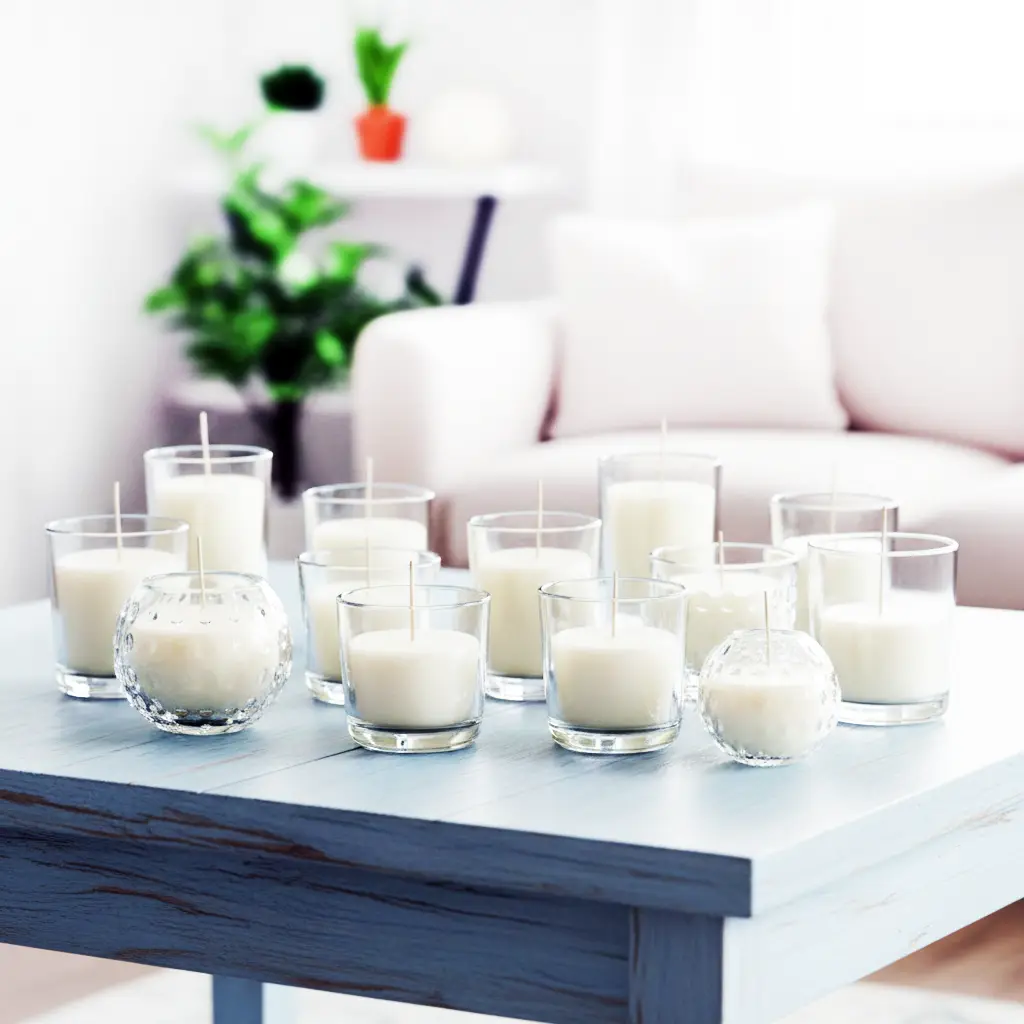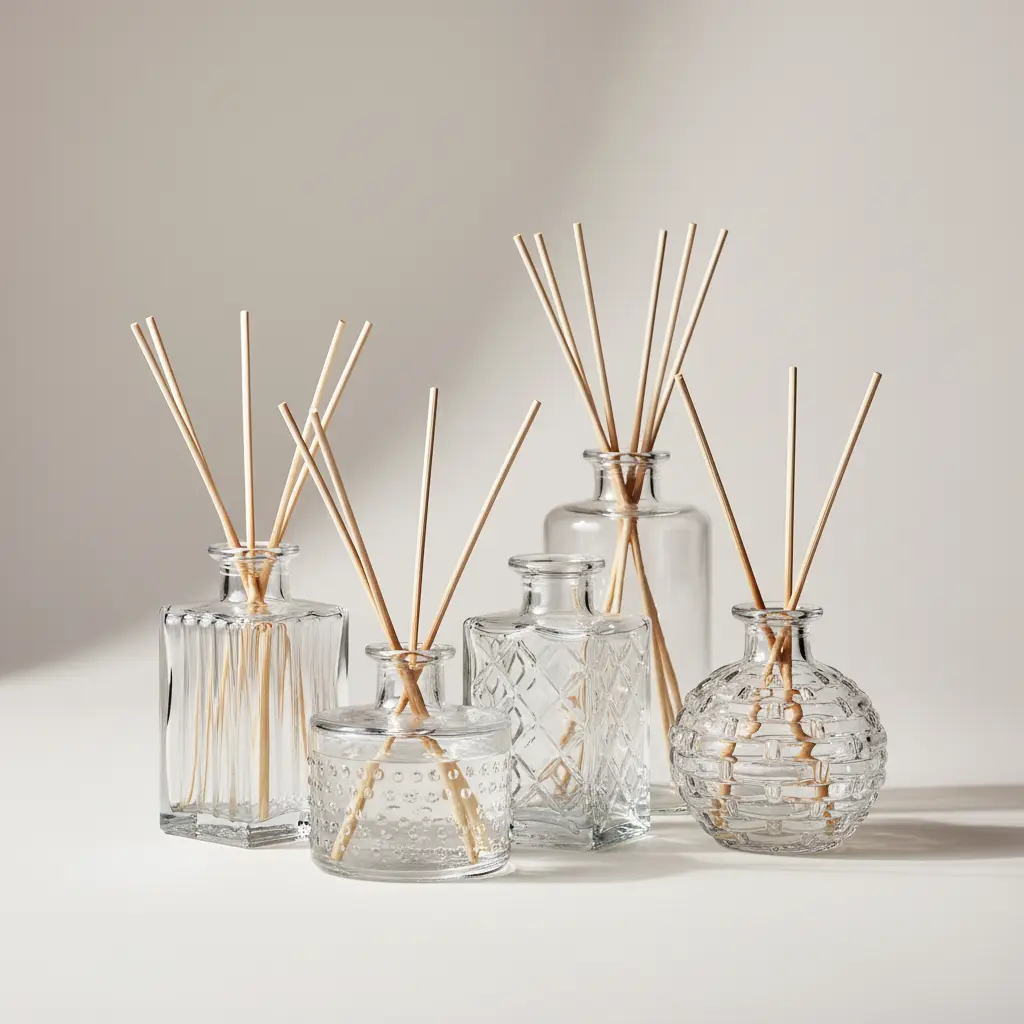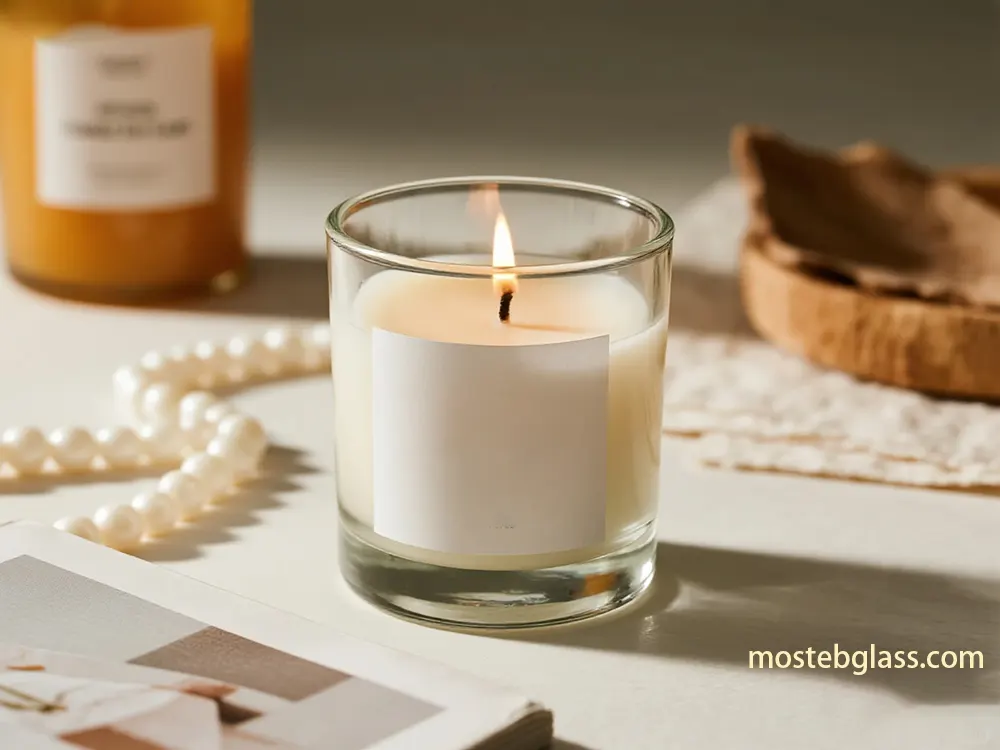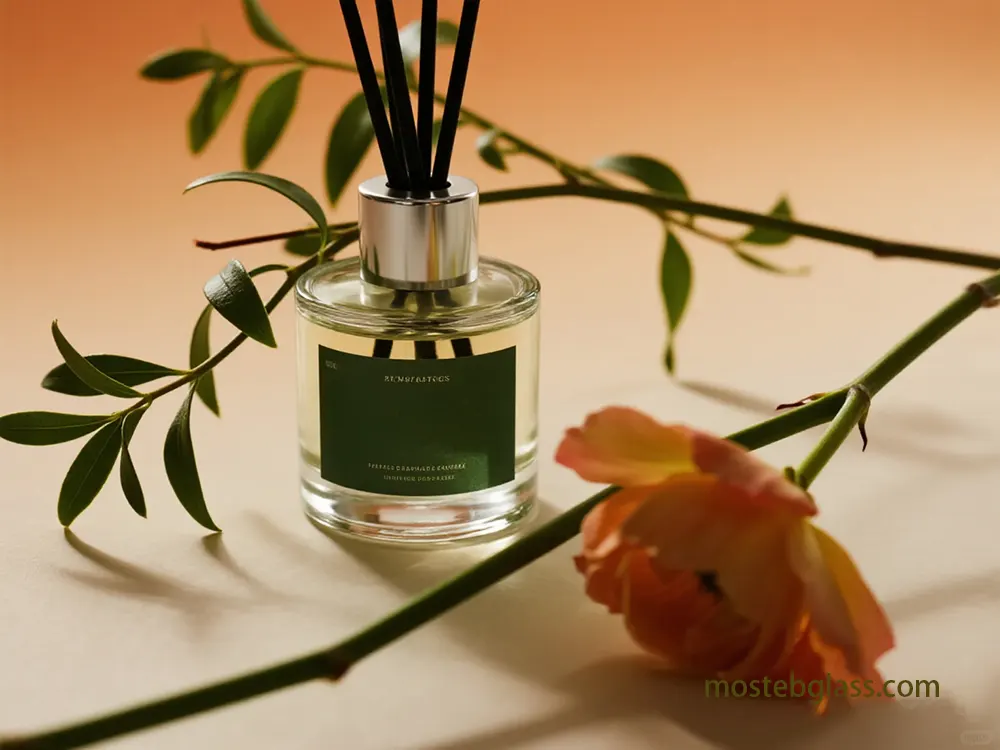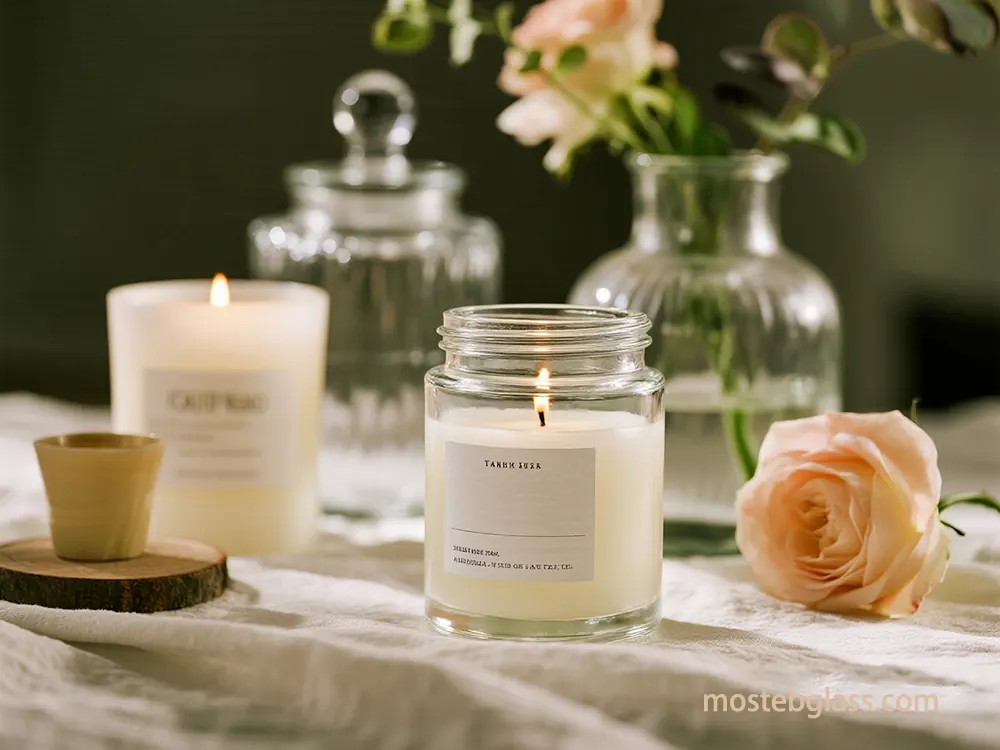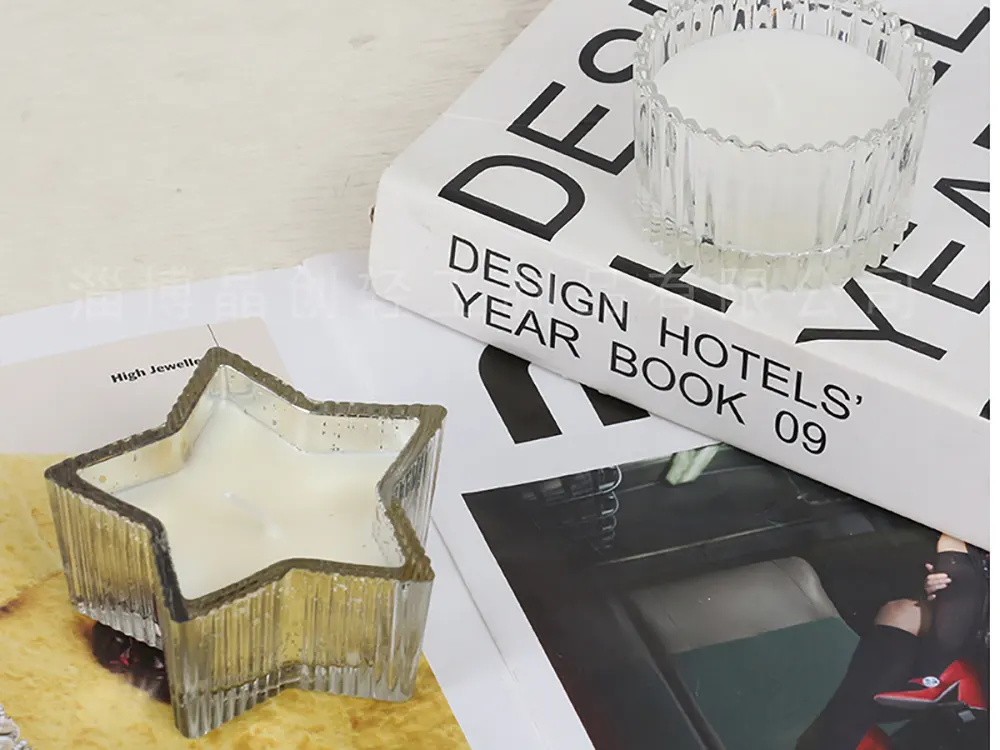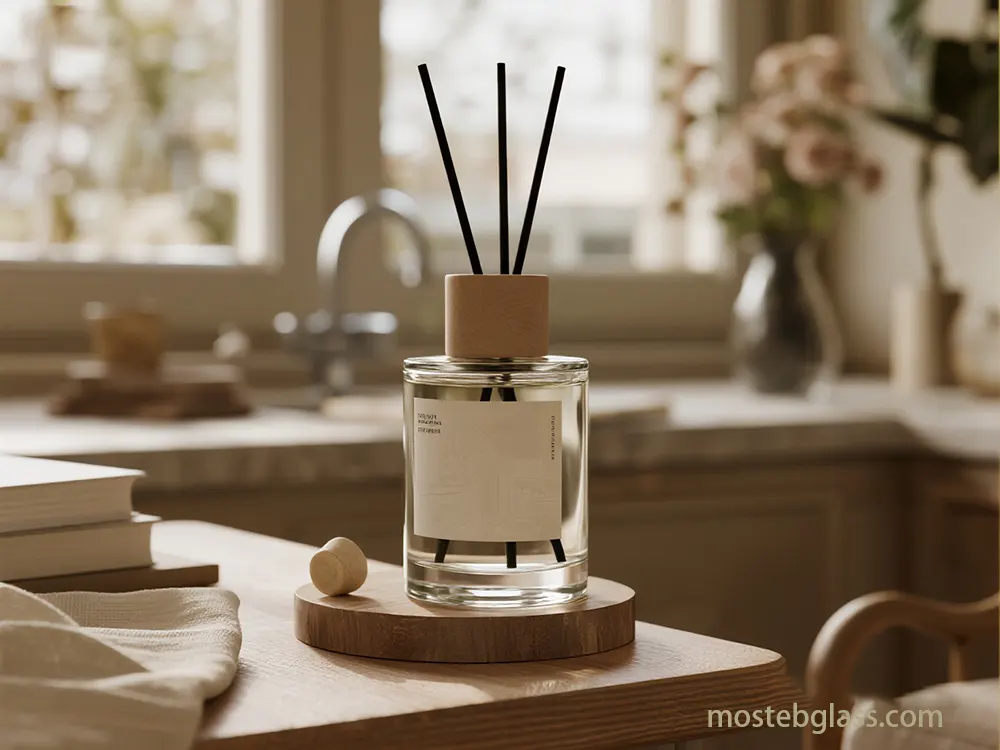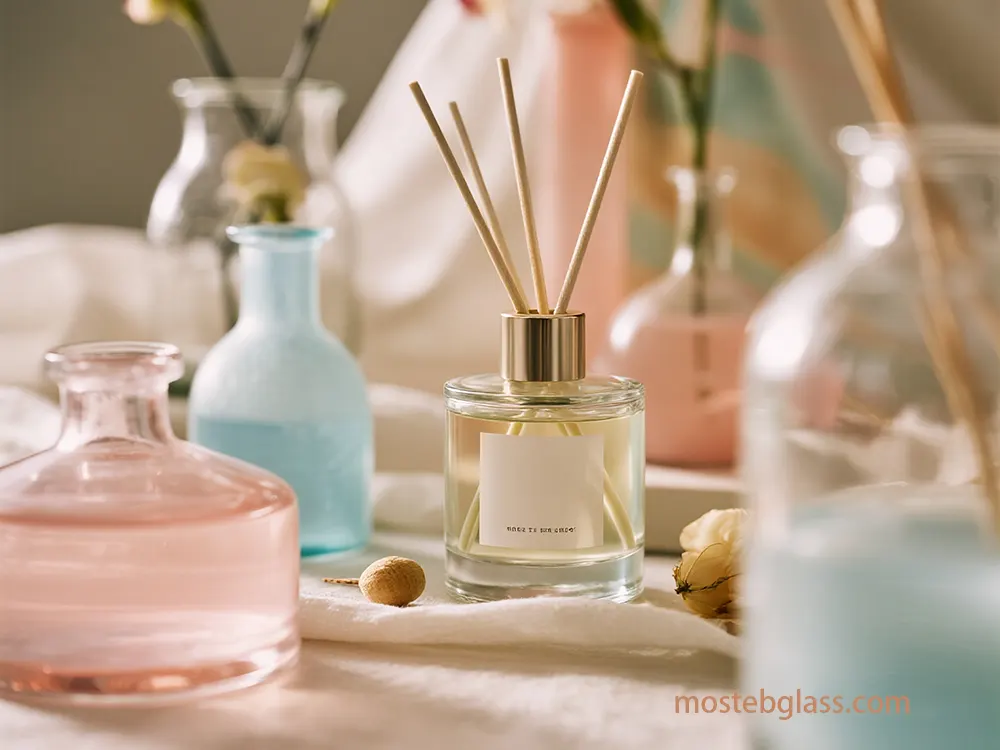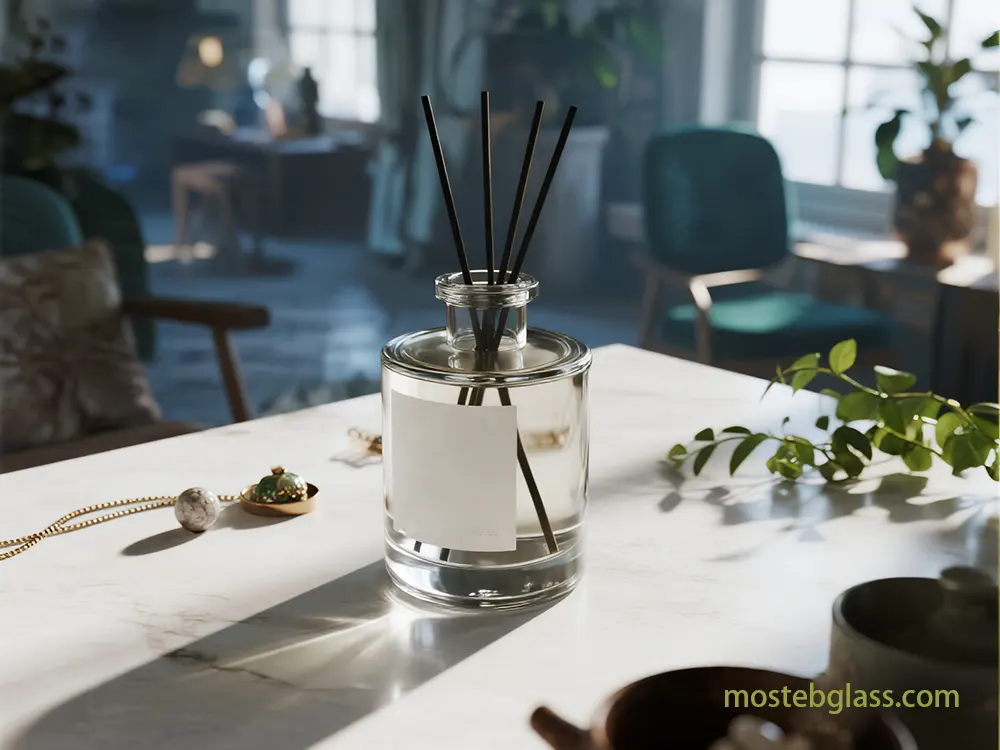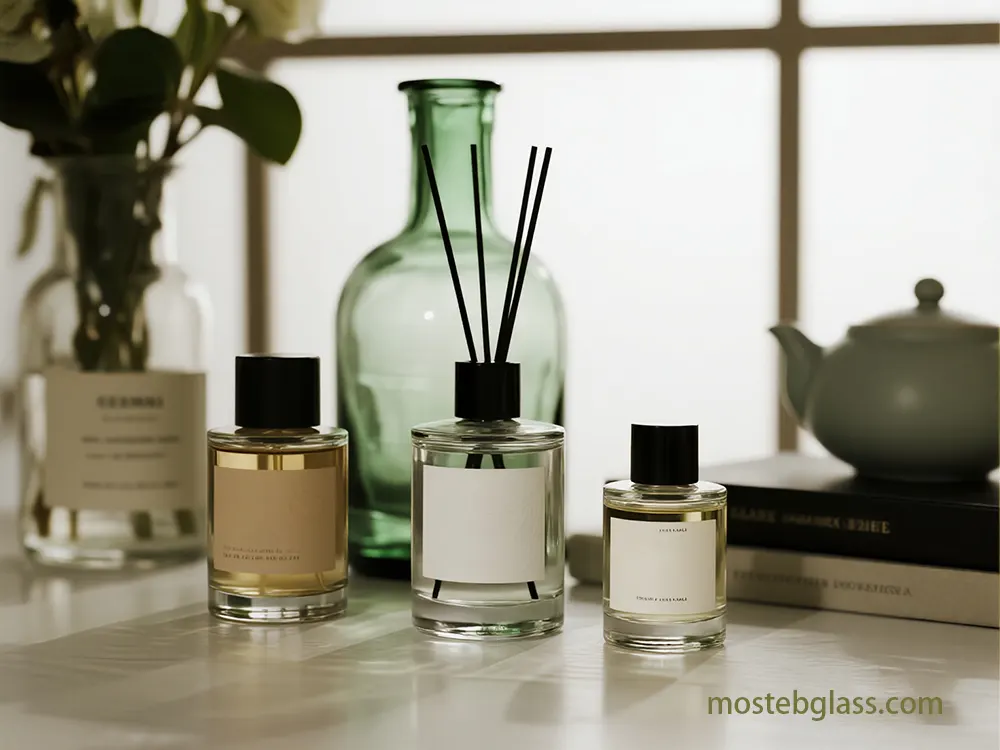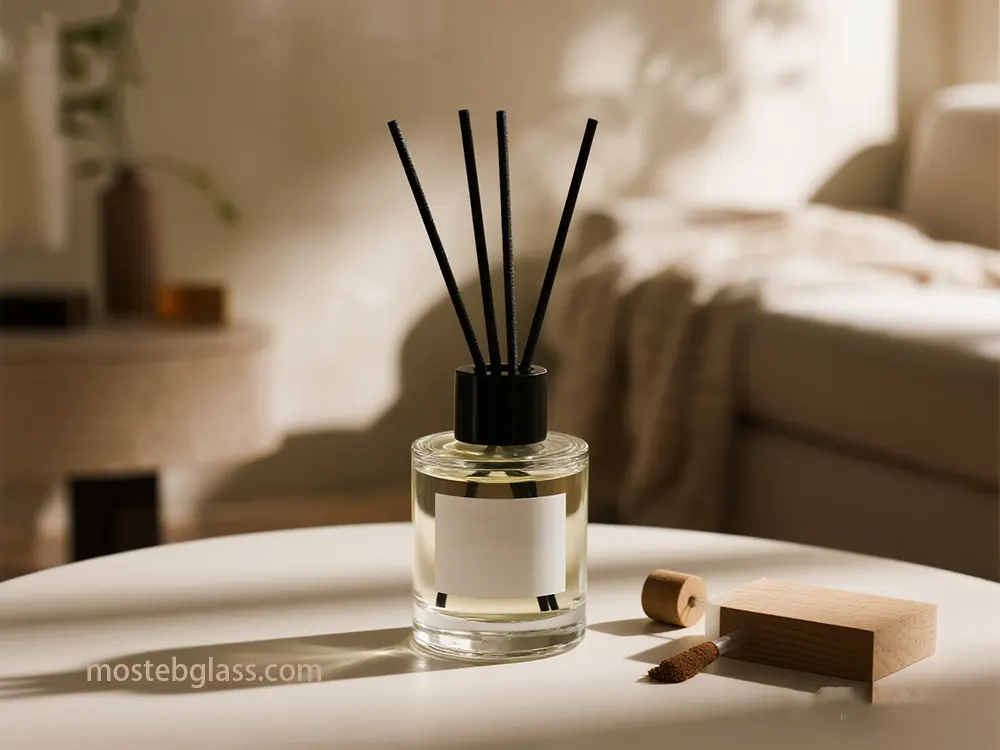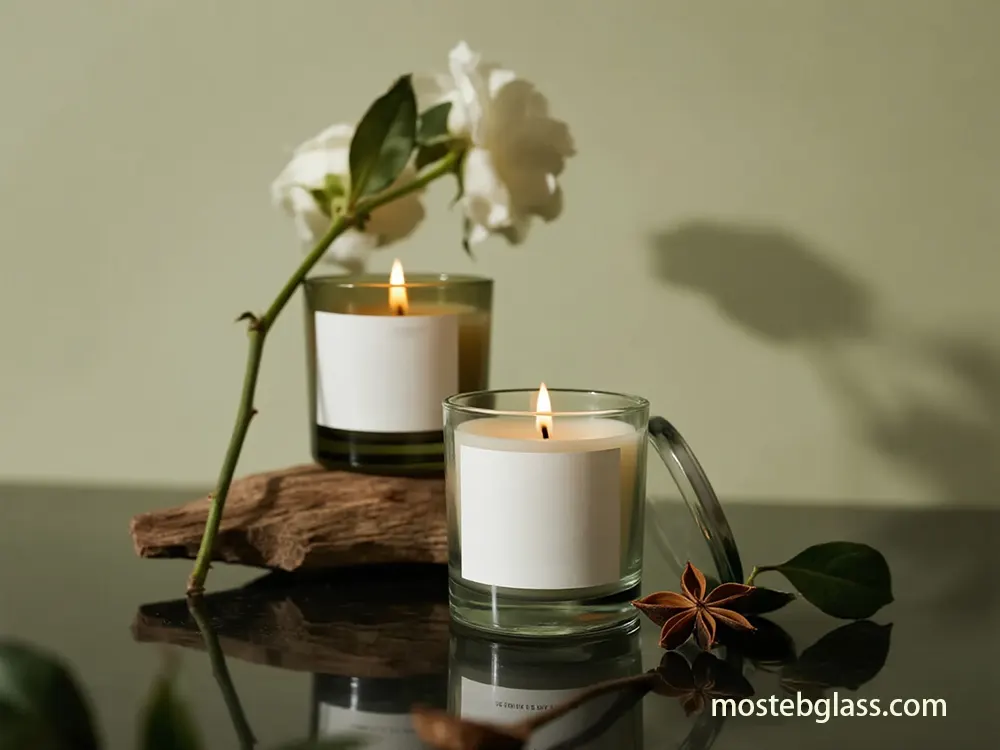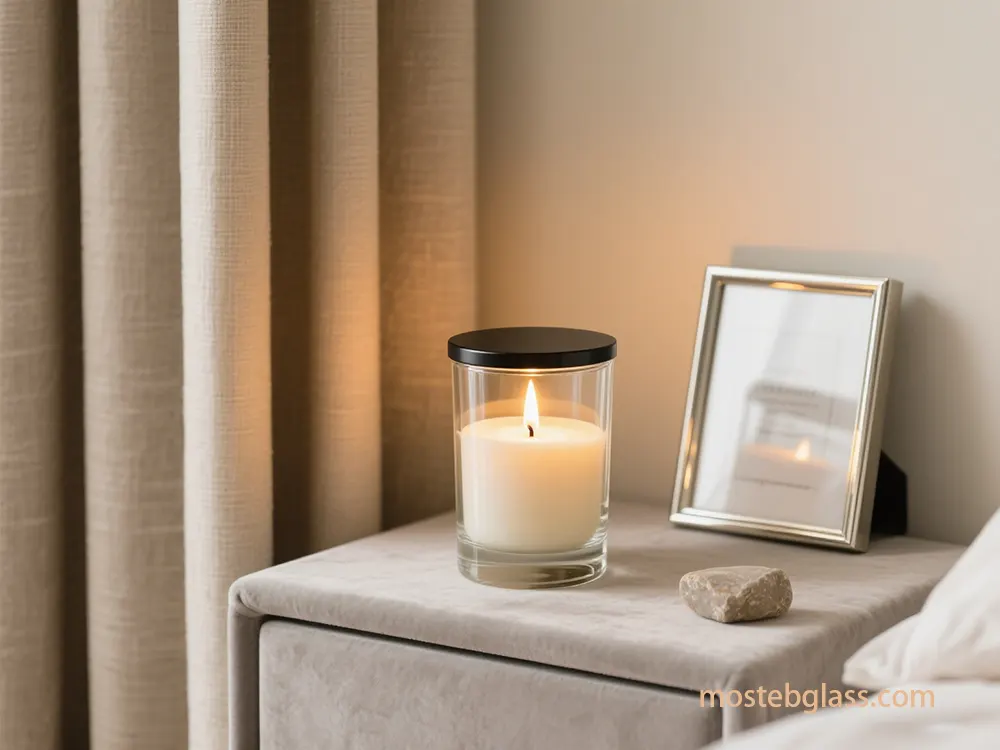1. The Silent Language of Scent Packaging
For any glass diffuser bottles suppliers, fragrance packaging is the main medium through which a brand conveys personality, product nature, and perceived value. Even before smelling the scent, the packaging creates the consumer’s first impression — a “silent salesperson” with full freedom at the point of sale. This moment is crucial, as packaging communicates product quality and value, influencing over two-thirds of consumer decisions, and up to 85% in impulsive categories.
Fragrance bottle design ingeniously employs “packaging psychology” as an elaborate communication without words. The main mechanisms of impact are the visuals – colors, forms, and textures – that deliberately appeal to the customer’s feelings and guide his/her quality and value assessments. Smooth, well-thought-of designs with excellent materials speak of elegance and richness, just like Apple or Tiffany & Co.. On the other hand, a poorly designed or a cheap-looking packaging will make consumers doubt its quality right away; 45% of consumers confess that they have never bought a fragrance because its bottle looked cheap or tacky.
Besides the visual appeal, the bottle’s layout triggers various other senses. Touch & feel – weight, a luxurious wrapper for the product (e.g., velvet, embossed carton), and a nicely working spray nozzle – are among aspects that lead to the making of the perception of premium quality and luxury.his integrated sensory itinerary shapes the consumer’s pre-scent experience, enabling a deep emotional bond to be established.
Visual storytelling makes scent more than just an experience – it becomes a personal style icon. As a “silent narrator,” the bottle creates vivid tales derived from a person, a place, a feeling, or an experience, thus, allowing more comprehension and brand loyalty. For niche perfumes, this is the main point of turning the most intangible component into evocative narratives.
The unboxing experience, in addition, to be really good, is connecting more and more with this feeling, letting it grow and deepen. This unique “moment to be shared” which gives a lot of room to social media in spreading the brand, its effect, and desirability, can be exemplified, for instance, through Glossier.In the role of a Mosteb glass diffuser bottles supplier, it is very important to be aware of packaging’s fundamental part especially when considering that the quality and style of bottles have a direct influence on perceived value, desirability, and success in the market.

2. Decoding Design: Insights from a Glass Diffuser Bottles Suppliers
The attractiveness of a fragrance bottle is basically a result of the complicated interplay between its aesthetic and functional features. The shape, the finish, the material of the sac, the design of the cap, the labeling, and even the tiny little decorative things on the bottle are all working together not only to attract attention but also to deliver the brand message and to indicate whether it is a brand of luxurious or affordable product, with each element playing its part in the story as the whole.
2.1. Shape as an Emotional Catalyst
The form of the bottles is a kind of a silent language very close to the human psyche, which helps to stay in touch with inner feelings and to get the right idea about the brand.
- Rectangular shapes, like Chanel No. 5, are the perfect examples of one thing that never gets old – elegance, stability, and classic beauty, and as a result, they become the epitome of sophistication. Its minimalist design was a challenge to the decorated bottles of that time.
- Curvaceous forms, like Jean Paul Gaultier’s, the designers want to tell about the sexiness of their product and at the same time to put a brave face on it, by offering it to everyone through the implicit suggestion of warmth and friendliness.
- Tall and slender bottles are usually associated with elegance, refinement, and delicate fragrances. On the contrary, wider and more robust shapes give off the impression of strength, stability, or even that of a masculine character.
- Unconventional designs, such as Viktor & Rolf’s “Flowerbomb” (hand grenade) or Moschino Fresh Couture (degreaser), attract those who like to go against the grain and prefer to express their uniqueness through such means, thereby rejecting the concept of traditional luxury.
- Cylindrical bottles provide a clean, modern, and flexible look, which makes them a popular choice for the fragrances of today as well as those of unisex (for instance, Montale, Dior Prive).
- Architectural inspirations do not only add more sense to the works but also make them grander. Valentino’s Born in Roma is influenced by the Roman architecture whereas Thierry Mugler’s Angel is the star of the sky. Frank Gehry’s designs emphasize a blend of innovation across various disciplines.
2.2. Materiality and Finish: Craftsmanship Perfected in a Glass Diffuser Bottles Suppliers
The choice of components will largely determine the product’s quality, its luxury, and its whole sensory experience.
- Glass still is the main material used in the making of high-end perfumes as it is neutral, it keeps the scents pure, and its very nature of being clear is speaking of luxury and eternity. 92% of the top-tier perfumes are housed in glass containers.
- Thick glass and heavyweight materials for making the bottle and the cap can substantially add to the prestige and give the impression of a high-quality and expensive product being reinforced.
- Luxury or premium packaging may be comprised of different kinds of top-tier materials such as superior paperboard, velvet, and leather, released to uplift the opening experience.
- Tactile experiences are paramount; the smooth surfaces are indicative of being new and up-to-date, while the textured ones may lead the consumers to believe that the product is more authentic or even made by traditional methods of craftsmanship.
- Today, various technologies make it possible to apply the multi-hued and gradient finishes that create the effect of the color changing depending on the angle from which the object is looked at. Different materials like black leather and bright pink being used in combo in Valentino’s Born in Roma can achieve a strong effect. Looking back in history, the vessels transitioned from clay to crystal while at the same time reflecting the different art movements such as Art Nouveau or Art Deco.
2.3. Color Psychology: Evoking Emotion
The color of the bottle is a very important element of sensory marketing that determines the emotions and the perceptions that come to the consumers in a matter of milliseconds and which are supposed to be coherent with the fragrance’s identity.
- Red is the color of love, energy, and excitement.
- Blue is the color of serenity (lighter shades are used to promote freshness, whereas darker ones indicate luxury).
- Green is the color of nature, fresh air, and equilibrium.
- Yellow and orange are the colors that spread the characteristics of warmth, cheerfulness, and life energy.
- Pink is the color that stands to represent female qualities, romance, and being charming.
- Purple is the color of top-quality, creativity, and mystique, in the instance of Dior Poison’s toxic apple shape, it is manifested as such.
- Black is the color that stands for elegance, power, and mystery.
- White is the color of purity, simplicity, and a clean look.
- Gold is the ultimate symbol of luxury and wealth.
- Silver is the color that best suggests the modern and the innovative.
- The transparent bottles give the opportunity for the color of the fragrance that is inside the bottle to become the part of the overall design.
2.4. Cap Design and Embellishments: Indicators of Exclusivity
The design and decoration of a cap elevate a simple bottle to a miniature piece of art that communicates exclusivity and prestige. A substantial metal cap indicates high-end rather than a light plastic one. One can hardly ignore the transformation of a mere bottle into an exquisite work of art that is decorated with the likes of diamonds, metallic shoulders, and ribbons, thus, achieving the highest level of craftsmanship and commanding attention. The bow on Miss Dior represents the characteristics of the product which are love, warmth, and femininity. Penhaligon’s Portraits series, with animal head caps, tells a story that is collectible.
2.5. Labeling and Typography: Brand Recognition and Clarity
Labeling plays a pivotal role in quickly identifying a product, indie fragrances in particular. Bad quality labels drive customers away; 45% of people report that they have avoided buying products because of labels that look cheap. Minimalist labels such as that of Byredo stand for subdued luxuriousness. The rectangular bottles provide lots of room for branding. Typography has a great impact on how a brand is perceived: serif fonts give the impression of a luxurious brand whereas sans-serif fonts are more suitable for a youthful brand. The most important thing is that the text is easy to read.
2.6. Pragmatism and Manufacturing Realities
Besides beauty, the practical aspects of a product such as the ease of use, durability, and functionality are still very important. A bottle has to be not only beautiful but also ergonomic and sturdy. Packaging that is durable, portable, and easy to use is what Hispanic consumers demand.
The manufacturing of complex designs like the stiletto of Carolina Herrera or the eye of Kenzo World requires balancing the artistic vision with the practical side of things. To remove seams, maintain integrity, and be very accurate in terms of leakage prevention, several specialized techniques must be used thus, advanced technical skills are to be required.
Small niche perfumeries that produce limited quantities of fragrances have to deal with the issue of high costs if they want to have unique and custom-made bottles. Without a small-batch or niche perfumery being able to achieve a certain volume of sales, custom molds for perfume bottles will always be expensive. Creative solutions such as hand-stamping, custom dyeing of standard bottles, or distinctive cap designs can give the feeling of bespoke without the full custom costs.
3. From Shelf to Soul: Consumer Perception and Purchase Drivers
The psychological and emotional factors behind the journey a product makes from a shelf to becoming a valued possession are at the core of the theory. The design of the bottle has a major impact on how the product is regarded, the emotional connections made, and the eventual buying decision.
3.1. The Psychological Impact of Design
The packaging is the very first contact with a brand and, thus, it determines the mood and the standards.
Good packaging design exudes professionalism, high-quality, and meticulousness, thereby elevating the brand image and instilling great customer trust. In contrast, inadequate design lowers customer trust and thus, the value perceived is also reduced. The consumer’s multi-sensory consumption adventure sets the mood for the product even before the smell is experienced, thus, it has the power to create a feeling of expectation. For instance, a slender bottle could denote chic while a weighty one, luxury and lastingness.
Neurodesign, a combination of neuroscience and design, is a packaging concept that is deliberately set to bring about certain emotional and behavioral changes, thereby indirectly influencing the purchasing decisions that are made at the subconscious level. Neuromarketing includes techniques such as EEG, fMRI, and eye-tracking that are used to pinpoint the subconscious reactions which consumers have to certain packaging elements. Thus, it can be seen as very accurate medical evidence of the emotions experienced.
By applying emotional design through the use of easily recognizable and emotive colors, memorable and impactful fonts, and the unification of all these aspects, the brand can significantly increase its consumers’ chances of recalling the brand and making lasting connections. 71% of consumers claim that they would be more likely to recommend a brand if they experienced an emotional bond with it. This emotional connection is the main factor that influences the most loyal consumer base. A nicely designed bottle, for example, can contribute up to 20% of the total value of the product and is, in many cases, turned into a souvenir that people keep.
3.2. Specific Design Elements and Their Psychological Associations
Each and every design component is basically a stepping stone that leads to the consumer perception:
- Color:Works almost like a language by that it triggers very clear and strong emotions; red is used for passionate products, blue for relaxing ones, and warm colors for energetic ones. The use of neutral and earth colors in skincare products is a trend that signals clean and natural formulas.
- Shape and Form: One of the main reasons why people admire is the fact that a lot of them tend to be symmetrical. The main feature of a rounded shape is that it is friendly and inviting. An angular shape signifies being up to date and a fearless attitude.Shape, transparency, color, and opacity can be extremely helpful if you want to be very specific about the target audience.
- Typography: Choosing the right font is one of the major factors that determine brand personality; fonts that are more classic are usually associated with luxury, while playful fonts with youthfulness.
- Textures and Materials: The parts that can be touched in a product are some of the main contributors to the emotional appeal and the perceived quality of the product. A smooth surface, for example, usually suggests luxury whereas a rough one, authenticity.Premium materials provide luxury.
- Imagery and Graphics: Carefully selected pictures are capable of bringing out certain feelings and even memories and at the same time, let the customer know the brand story and the values that the brand stands for.
3.3. Quantifying the Impact on Purchase Decisions
Packaging that is done well can reportedly bring about a sales growth that is quantifiable by as much as 30%. Aesthetic appeal being the main power behind the whole thing: 16.5% of the consumers purchase parfums only for the packaging of the bottle, regarding them as “objects of art”. On the other hand, 45% would not buy if the bottle looked cheap or tatty.
In the luxury market, the “fragrance effect” is the phenomenon whereby consumers decide to purchase luxury fragrances instead of more expensive aspirational items.This emphasizes the prominence of the fragrance and its packaging in not just giving off the luxurious but also the aspirational value. Some people might be in the opinion that there is too much “artistic packaging” for certain segments, still, a carefully designed bottle is vital for distinguishing the market, brand perception, consumer trust, and confiding impressions.
3.4. Consumer Preferences and the Role of Scent Beyond the Bottle
Consumer preferences are a complicated matter as they depend on age, demographics, culture, and lifestyle. Just 7.5% of respondents said that they would not buy a fragrance because the color was gender-associated, while 45% said that they would not buy if the bottle looked cheap, thus indicating that perceived quality is more important than traditional gender coding. Men are usually attracted to sturdy, square bottles (e.g., Bleu de Chanel), whereas women to sleek, ergonomic ones. Round bottles can be used by both genders, thus are the most common for unisex fragrances. Artful products like House of Oud Living Colors or Tom Ford’s Tobacco Vanille are not only on-trend but due to their artistic merit and luxurious aesthetic, they appeal to a wide audience beyond art lovers.
Although the bottle design is very important, the smell has a strong, subconscious, and powerful connection with the limbic system (the part of the brain responsible for emotions and memories) largely unexplored by the conscious mind. One of the benefits of a well-thought-out scented marketing strategy can be an increase in customer retail time, to the point of impulse buying being triggered, user relaxation, as well as brand recognition and loyalty. This is where the synergy between the visually appealing and the evocative scent come together to offer the customer a holistic product.
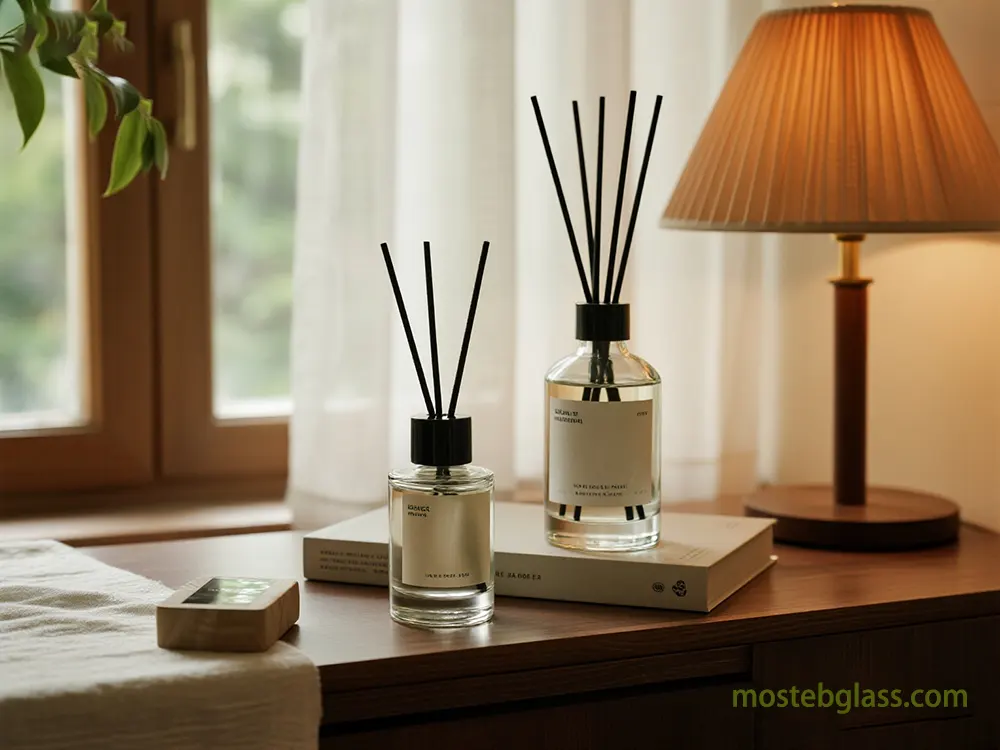
4. Market Resonance: Tailoring Design for Segments and Regions
One of the main reasons that successful perfume brands manage to keep the bottle design relevant is that they always take into account what will resonate with the specific market segments and cultural preferences and then by doing so they maximize the appeal and sales just by understanding local aesthetics, traditions, and diverse consumer demands.
4.1. Regional Design Adaptations
4.1.1. Middle Eastern Markets: Luxury, Tradition, and Cultural Storytelling
What the Middle Eastern markets demand most of all is packaging that not only reflects the rich cultural heritage but is at the same time visually impressive, shows the luxurious side of the product, is decorated with the intricate geometric patterns and makes use of the precious materials in a lavish manner. For that purpose, the application of an ornate gold detailing is an absolute must both for respecting the traditional aesthetics and for meeting the quality expectations set by the consumers. The use of ethical crystal and precious stones for the decoration not only provides real luxury but also gives an element of authenticity. On top of that, one of the main elements of the design are the traditional Arabic calligraphy writings which require a cultural understanding as well as collaboration with artisans. Brands like Arabian Oud are main contributors to the trend, Middle Eastern scents are going global and thus packaging is gradually getting minimalist and universally attractive for the export market.
4.1.2. Asian Markets: Diversity, Convenience, and Sustainability
The Pacific Asia region is the fastest-growing market segment for perfume packaging globally and it is projected to be worth as much as USD 14.56 billion by 2034. Such a development is primarily attributed to the lifestyle changes, the desire for luxury, the demands of Gen Z, and the growth of e-commerce. The Asian consumers, mainly from China, India, and Indonesia, put a premium on beauty while on the go which automatically translates to a growing trend in portable perfumery products. Japanese perfumes are usually characterized by minimalism whereas the ASEAN countries are more inclined to use bright colors and tropical designs that reflect both the climate and culture. The compact format also makes sense in the damp conditions.
4.1.3. Western Luxury Packaging: From Ornate to Sophisticated Modernism
The country of France is still considered the world leader with Parisian design houses setting high standards. A traditionally decorated French style is now moving to a sophisticated modernist one with a mix of elegance, design innovation, and sustainability. One of the most significant examples of minimalist design playing a part in timeless elegance is the square bottle of Chanel No. 5. The EU perfume bottles are a symbol of not only the traditional and classic beauty but also of refined sophistication and lasting quality, with the likes of Chanel and Dior being the most notable exemplars of the designs that radiate affluence and grandeur.
4.2. Tailoring for Market Segments
4.2.1. Gender-Specific and Gender-Neutral Designs
The industry is moving towards the idea of unisex or gender-neutral perfumes, going away from the strict gendered marketing manner. While brands have been traditionally manufacturing separate “men’s” and “women’s” versions, currently there is a tendency of merging them into one, elegant, simple, universally attractive design. Most unisex fragrances are presented in cylindrical bottles (for instance, Dior’s “Prive” line). In the 1990s with a very simple kind of packaging and very inclusive marketing Calvin Klein’s CK One was the first to introduce unisex scents to the market.
4.2.2. Niche Fragrance Packaging: Artistry and Individuality
The niche players in the fragrance field exploit exceptionally creative, unique, and artistically conceptual packaging to not only separate themselves from the competition but also to communicate complex stories. As a perfect example of the company that shows how a bottle can be an indispensable part of the product’s appeal and can thus be transformed into a desirable item for display is “House of Oud,” with its hand-decorated, architectural bottles. These inventions usually go beyond gender and age limitations thus children and adults of all genders can become the fans of such artful presentations and luxurious tactile feel, just like in the case of the “Tobacco Vanille” by Tom Ford. Penhaligon’s Portraits series with animal head caps is a narrative built around collectibles.
4.3. Cultural Symbolism and Brand Identity
Color psychology and cultural symbolism are the main factors that determine local resonance since symbolism changes greatly from one culture to another. For instance, red is a symbol of love in the West while it is a symbol of luck in Asia. Blue, calmness in the West, can be sadness in another culture. White is a color that stands for purity, black for sophistication, and gold for luxury. Without doubt, understanding these details is the key to successful cross-cultural design.
The design of the perfume bottle serves as a perfect medium for the brand to express its culture and identity along with the scent origin. Historically, Egyptian vessels to Renaissance masterpieces, were not only used to store but also to symbolize status and cultural significance. Presently, the brands mix East and West by using either the traditional art or certain cultural symbols like henna patterns or Arabic calligraphy. Such a deliberate integration provides the bottles with the ability to tell the stories, giving them the new level of the cultural connection they create and also the language of culture-friendzy.
The practice of collaboration and localized products is one of the ways brands engage with consumers. Kao brought Molton Brown to Malaysia through Valiram. RSR in Bangladesh introduced “Karnaphuli,” a product inspired by the local river and the climate. This is a perfect example of a complete approach to cultural adaptation where the environment and local storytelling are also taken into consideration.
5. The Design-Sales Nexus: Quantifying Impact and ROI
It is very important for a company to measure the direct link between their bottle design and the sales of their products. This is the only way a company can realize their design return on investment (ROI) and so the company management will be guided to take further decisions. In order to measure this, companies need to use both qualitative and quantitative research methodologies which are focused on metrics.
5.1. Methodologies for Measuring Design Impact
5.1.1. Quantitative Testing and A/B Analysis
One of the robust approaches is the quantitative method of package design testing and A/B testing.Quantitative testing serves the purpose of concept confirmation, locating the elements that are most engaging, perfecting the communication, and also it is able to estimate the increase in the sales due to the new implementation of the design.A/B experiments compare the two states (before and after the change) of the sales in the markets where redesign has taken place, the study of data is conducted through POS analytics to determine KPIs like sales growth, revenue increases, and repeat purchase rates.
5.1.2. Shelf Impact and Visibility
In order to measure the extent to which the packaging can attract the consumer’s attention, one of the methods used is eye-tracking studies, In-store audits, and behavioral analytics.These accomplish the main goal by determining consumer focus duration and share of attention. Through virtual simulations it is possible to forecast shelf prominence, hence the metrics provided are, for example, attention capture rate and gaze duration.
5.1.3. Brand Equity Impact
The effect of a packaging redesign on brand equity can be gauged by means of customer feedback, customer satisfaction scores, and online sentiment monitoring.Restructured packaging not only receives more attention from the customers but also helps the brand to become more recognizable, as more than 50% of the consumers declare that they repeat the purchasing of the same product if the packaging is familiar to them.Brand “DNA” can be preserved even though it is going through changes by auditing “structural equity” which means that it is important to keep or create new unique features such as shapes of the brand that the consumers will associate with the brand.
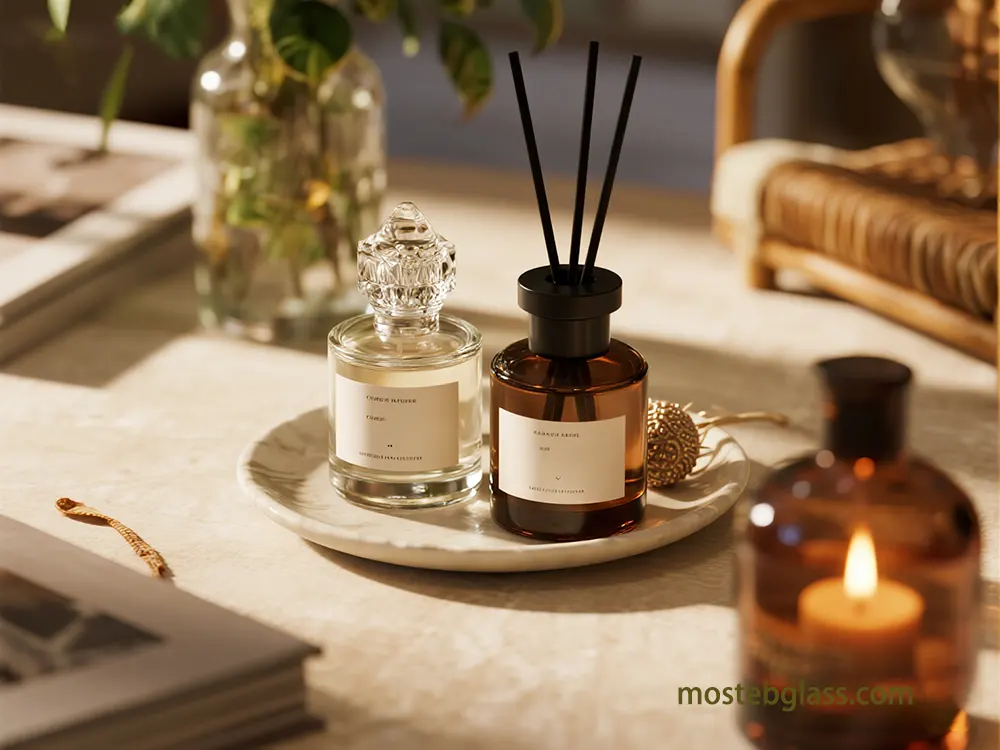
5.2. Key Performance Indicators (KPIs) for Design Effectiveness
A thorough system for evaluating the efficiency of design comprises the following indicators:
- Sales Lift: Increase in sales attributable to design.
- Shelf Impact and Visibility: Attention capture rate, gaze duration.
- Packaging Durability and Integrity: Reduction in the number of returns due to product damage and cases initiated by customers.
- Packaging Material Cost Efficiency: Fund coming from the use of cost-effective solutions.
- Customer Engagement: Through numbers of online interactions, social media sentiment.
- Conversion Rate: If a user is doing a desired action, then the percentage of conversion is calculated.
- Average Order Value (AOV) and Customer Lifetime Value (LTV): Indicator of long-term financial impact.
- Customer Satisfaction Index (CSI) and Net Promoter Score (NPS):Indicator of customer happiness and recommendation willingness.
- Gross Margin and Sell-Through Rate: Indicating profitability and efficiency.
- Sold Quantity/Selling Days: Defining sales velocity and market acceptance.
5.3. Advanced Analytics and Operational Efficiency
Retailers use predictive analytics, AI-driven insights, and omnichannel data to make their demand forecasts more accurate. This allows for smarter assortment planning as well as inventory management through anticipation of consumer preferences for packaging which could be in the form of the material, color, or even a sustainability feature. Google’s machine learning helps to unearth insights and even predicts customer behaviors, thus leading to improved marketing ROI.
However, besides sales, packaging ROI is also influenced by operational efficiency and cost savings. What is more, this is an array of savings stemming from cost-efficient materials and the minimum of cartons/secondary packaging, which not only lowers the shipping costs but also reduces material use and thus, contributes to a cleaner logistics process.
5.4. Case Studies and Strategic Considerations
The influence of packaging design on the bottom line is emphasized through the examples that the authors give to us. RXBAR, through its redesign, saw a growth of its sales figures from $2 million to $160 million. Tropicana’s 2009 rebranding, which involved the removal of the brand’s iconic imagery, caused a 20% sales decrease. Chobani’s 2017 redesign, with the artisan look, helped the brand to stand out in the saturated market.
The key to success in redesigns is going through a set of substantial reasons other than aesthetics, cross-functional planning which is done thoroughly, and communication which is open. Being data-driven is one of the very important aspects that help to make the right decisions regarding design and ensure that they will be successful in the market rather than simply taking the side of one’s preferences or following the trends.
6. Future Forward: Emerging Trends and Innovations in Fragrance Design
The fragrance packaging industry is changing, powered by sustainability, the use of technology, and changing consumer expectations for personalization and easy-access luxury. From 2025 onward, we can expect that packaging made from environmentally friendly materials, with minimalist designs, and smart packaging will be the standards of the industry.
6.1. Dominance of Sustainable Materials and Circular Economy Principles
Among the different driving factors, sustainability is the main one, and hence by 2026 recycled materials and refill systems are going to be the standards in the industry.
- Recycled Content: As for the material, glass is still leading; 60% of luxury brands have already switched to recycled glass (PCR glass) usage for their products in order to lessen their environmental impact. Brands like Chanel, L’Occitane, and Jo Malone London are the leaders in the usage of recycled glass.
- Refillable Systems: Because of the consumer demand, the idea of refillable/reusable packaging is quickly becoming the most common one in the industry. Gucci, Tiffany & Co., Diptyque, and Maison Francis Kurkdjian are some of the brands that use these methods for waste reduction.
- Biodegradable and Plant-Based Materials: The development of biodegradable plastics made of sugarcane or corn starch is a trend that is quite evident in the industry.Lush is the one that is using mushroom packaging and reusable aluminum tins in the process of sourcing to cutting down on waste. Dr. Ian Pearson, a renowned futurologist, sees the waste-free materials coming from fungi and edible seaweed packaging in the future.Xampla got investors to open their wallets to the tune of $14 million to phase out single-use plastic with plant-protein alternatives.
- Moulded Fibre: One of the most talked-about topics in luxury packaging is how moulded fibre is evolving as not only a renewable, recyclable, and compostable alternative to plastic but also as a highly customizable material.
- Lightweighting: The question of whether the industry is willing and able to reduce the weight of the packaging, especially glass flacons, to be able to lessen the transportation emissions and the carbon footprint has been confirmed in the affirmative.
- Circular Design Principles: These principles are having an impact on the decisions of the packaging designers, whose main concern is still the reduction of waste, recyclability, and prolonging the existence of the product. It also comprises designing for reuse and giving back to the recycling system by means of the Extended Producer Responsibility (EPR) schemes. DS Smith managed to reach the goal of 100% reusable/recyclable fiber-based packaging in 2023.
6.2. Advanced Manufacturing Techniques
- 3D Printing: It allows for the creation of complicated, tailored, and one-of-a-kind bottle designs, thus supporting the rapid prototyping and the fast changeovers.
- Magnetic Conveyor Technology: On the UNISTA 2025 perfume packaging line, magnetic conveyors are used for the exact and gentle moving of the most fragile bottles thus, the line becomes more productive and compact by this means.
- Shape-Changing Materials (Speculative): Among the things Dr. Ian Pearson foresees are the shape-memory alloys, intelligent reusable plastics, and the polymers that can change their shapes depending on the reason (e.g., decorative stand, device charger). Electro-active polymers may become capable of changing their shape whenever asked.
6.3. Smart Packaging Technologies and Digital Integration
- NFC/QR Codes and AR Integration: Brands embed NFC tags, QR codes, and augmented reality (AR) elements to provide better engagement with consumers, to offer digital experiences, to authenticate the product, and to trace the supply chain. Dr. Ian Pearson sees the packaging of the future as having integrated computer displays and advanced AR.
- AI-Driven Personalization and Scent Customization: The number of AI-based systems that will be used for extremely personalized and custom-made scents is expected to be very large (grow by 40% in two years). Besides this, AI is also a great tool for supply chain management and sustainability.
- IoT Components and Sensors: The implementation of the Internet of Things in a bottle is a futuristic idea that includes the integration of sensors for tracking usage or connecting to apps.
- Digital Scent Mapping: Tools that are software-based analyze as well as predict the evolution of the scent to help people make up their minds.
- Virtual Reality Showrooms: The future of consumer engagement will be completely different due to the tech integration that includes VR showrooms and digital scent experiences by 2030.
- Neuroscents and Functional Fragrances: This trend is the combination of neuroscience and fragrance to make the scents that would bring about the exact emotional reactions intended (e.g., calm, focus, joy). “Collection of Emotions,” a line of neuroscents by Charlotte Tilbury, generated $136 million in 2024. In addition, BMW Motorsport is also using neuroscientific technology in the creation of ’Emotiwaves’.
6.4. Evolution of Aesthetics and Design
- Minimalist Designs: The “less is more” concept is the main idea that a minimalist design has gained more recognition, and this change is substantially influenced by environment-friendly factors and the need for pure, elegant, and simple designs which are usually associated with an understated luxury.
- Personalization and Customization: One of the most important trends in the future of the industry will be the personalization of the products, especially of the bottles and the packaging which will give a personal, unique, and deeply connected brand experience to the customer. Guerlain’s Bee Bottle allows the customization of bee color and initials.
- Artistic Expression and Unique Shapes: People want their products to be not only functional but also the work of art. Art directors are coming up with the ideas for the bottles to have more elaborate features, to be of interesting shapes, and to use the combination of materials in the innovative way rather than just being the simple utilitarian forms.
- Tactile Experiences and Textured Finishes: Luxury packaging is turning to be more and more elaborate with its shifting focus to the enhanced textures and the tactile appeal giving the consumer an additional sensory dimension and making the products feel more substantial and memorable.
- The Collapse of the Distinction Between Product and Packaging (Speculative): According to Dr. Ian Pearson, components made of very advanced materials will not only make the packaging necessary for product operation but also brand equity the primary source thereof, thus the traditional boundary might have been removed.
- Gender Fluidity: As a societal trend, gender fluidity has been one of the factors that have had an impact on the design of the luxury packaging leading to the creation of the provocative designs which break the traditional gender norms and, thereby, become attractive to a wider audience.
- “Imperfection” as a Mark of Luxury: The less refined and more rustic versions of the cloth and similar products might be the ways whereby luxury brands choose to emphasize features like handcraft, authencity, and being eco-friendly by using irregular colors, unique textures, and non-transparent glass etc.
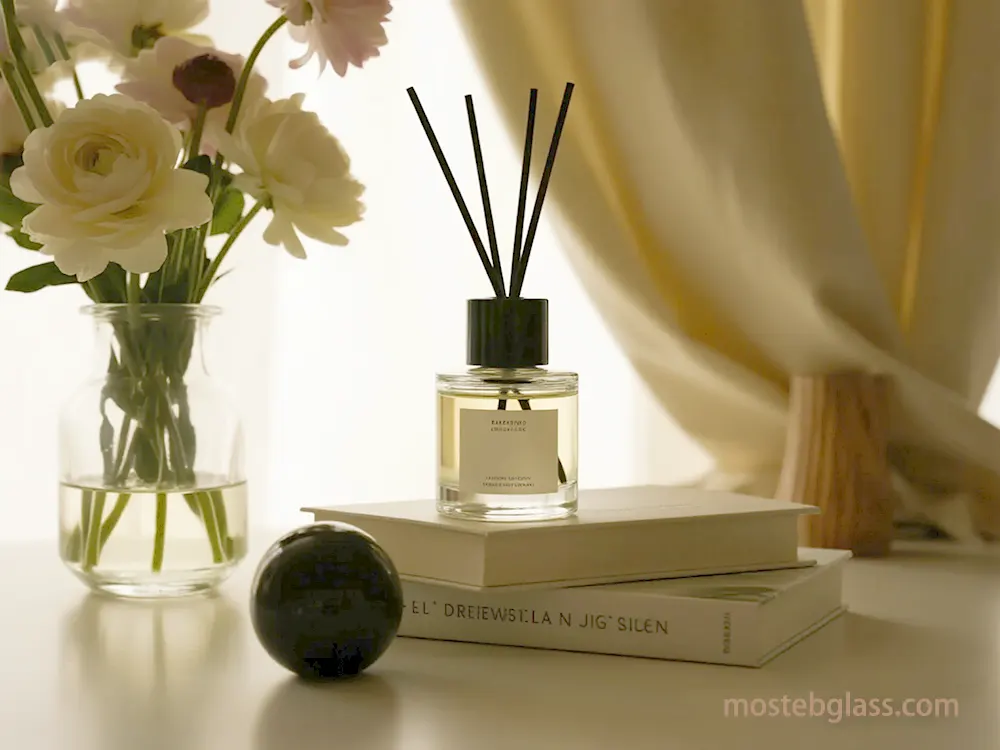
6.5. Ethical Considerations and Transparency
The industry is plagued by honesty- and morality-related challenges such as greenwashing and lack of transparency in the supply chain.
- Greenwashing and Consumer Confusion: One of the major problems facing consumers is greenwashing, which is the making of false environmental claims and is responsible for the loss of trust. “Greenhushing” (the act of lessening the extent of one’s real achievements) confuses the consumers even more. According to the research data, only 44% of Americans trust eco-labels, and among them, 32% are of the opinion that the items are not recycled. Almost 80% of European consumers report that they do not understand most of the sustainability labels.
- Evolving Regulatory Landscape: The European Commission’s Green Claims Directive aims to deliver trustworthy and verifiable environmental claims. The European Parliament gave a green light to the tightening of the anti-greenwashing regulations in January 2024 that require more detailed life cycle information of the product to accompany the advertisement. Some changes in U.S. environmental regulations are also noticeable as the EPA has recently updated sustainable purchasing recommendations. California, on the other hand, has quite severe restrictions on “biodegradable” claims.
- Supply Chain Transparency: In January 2024, CHANEL launched the Traceability Alliance for Sustainable Cosmetics (TRASCE) – A consortium of 15 manufacturers committed to enhancing supply chain transparency by utilizing Transparency-One.Among the challenges that remain are the engagement of lower-tier suppliers and the assurance of data confidentiality. Many luxury brands keep their customers in the dark about the outsourcing of the production, thus giving the impression of the manufacture being done in-house and not the artistry of the craftsmanship.
- Ingredient Sourcing and “Fragrance Loophole”: The ethical issues around ingredient sourcing have now extended to the “fragrance loophole” in the U.S. which allows the brands to put “fragrance” or “parfum” as a single ingredient without revealing hundreds of chemical compounds of which some are potentially harmful. The myth of natural ingredients being always eco-friendly is still widely believed; however, some natural ingredients require vast amounts of raw materials which eventually lead to overharvesting while some lab-created molecules can be even more eco-friendly.
- Brand Examples of Transparency: Transparentness is a hallmark of the brands that are ahead of their time. Diptyque made a report on its sourcing which is fully transparent for natural raw materials in 2023.Les Eaux Primordiales, Ormonde Jayne, and Matière Première are recognized for their openness in production and sourcing.
6.6. Impact on Consumer Perception, Brand Differentiation, and Supply Chain Efficiency
Environmentally conscious consumers require that products be wrapped in eco-friendly packaging and do not mind paying more for sustainable products, thus making sustainability a strong differentiating factor. Brands that focus on sustainable packaging gain customer loyalty, increase their brand value, and perform better than those who do not. Sustainability is fast becoming not only a core brand value but also a sign of responsible practices as well.
One example of a technology that helps to save space and increase the output of a packaging line is the magnetic conveyor technology by UNISTA.Where AI-enabled regenerative supply chain activities are supported by less stringent regulatory frameworks that encourage sustainable operations. The industry’s decision to focus on less material usage as well as on the lifecycle of the products is very important both from the environmental and from the business point of view.
6.7. Future Predictions (2030 and Beyond)
- Sustainability as Standard: Green practices will not only be a given but also deeply embedded in every aspect of product creation and packaging.
- Hyper-Personalization: With the help of AI steeped customization will be able to offer both products and packaging in uniquely personal ways.
- Tech Integration: Immersive VR showrooms, and digital scent experiences will completely change the way businesses attract and retain consumers.
- Vanishing Cartons and Battery Charging Boxes (Speculative): It might be that packaging disappears or that it becomes a way to supply energy to the device.
- Waste-Free Materials: Stop using plastics, and start using stuff like fungi-grown materials, and edible seaweed packaging.
- AI-Integrated Regenerative Beauty Market: A substantial increase is expected and will be mainly due to factors such as sustainability, regulatory initiatives, and the consumers who demand responsible products.
The continuous division of the market and the severe competition, among which companies like AptarGroup, Berry Global, and Stölzle Glass Group are, will keep on pushing product and packaging innovations to cater to the increasing need for customization and the creation of new packaging solutions, thus ensuring a vibrant future for fragrance design.
